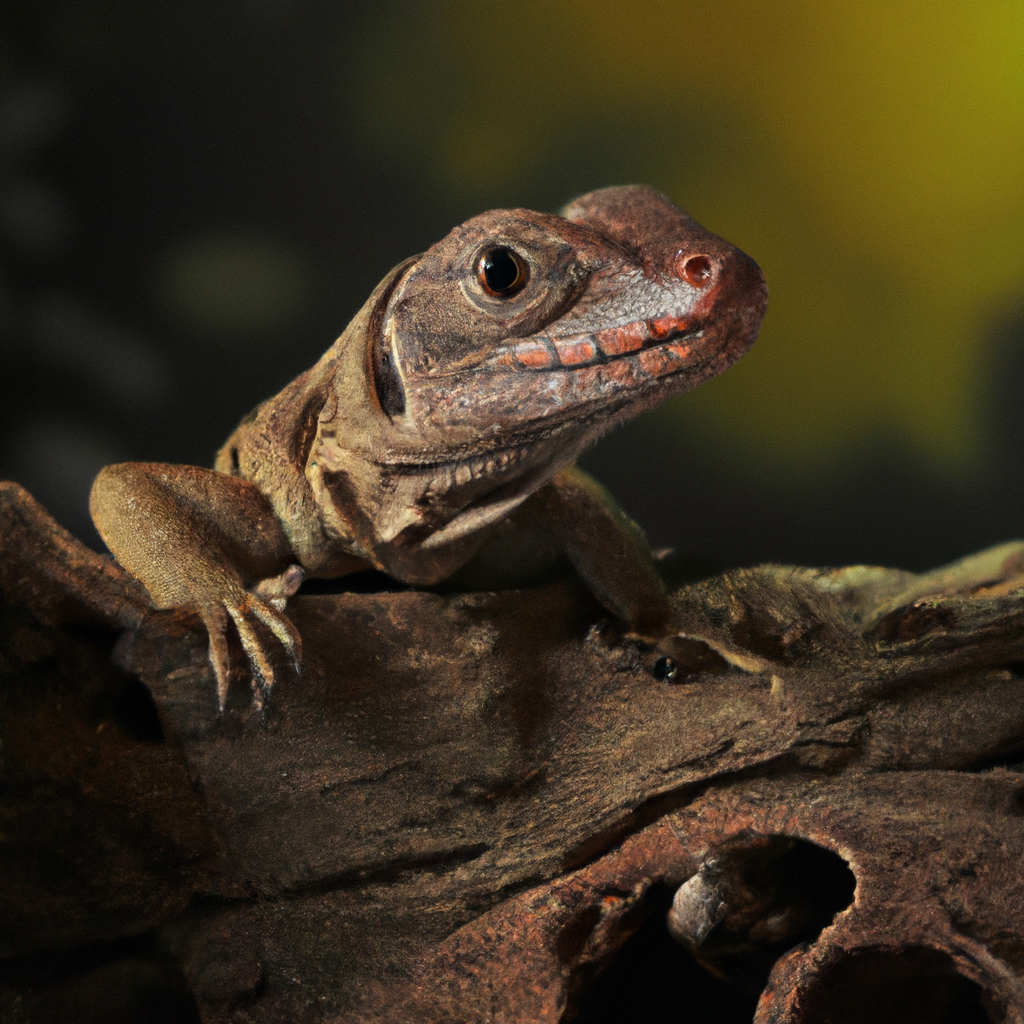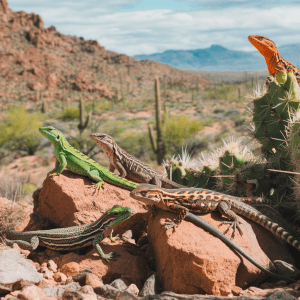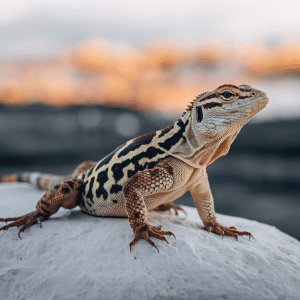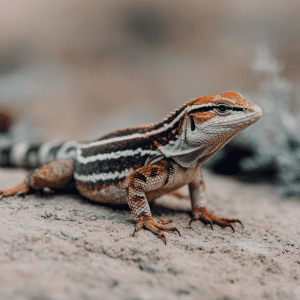Importance of Choosing the Right Lizard Substrate
Have you ever stopped to think about the kind of ground your lizard walks on every day? It might sound trivial, but the substrate you choose for your scaly friend is crucial for their health and comfort. Let me tell you why.
Imagine walking barefoot on sharp stones or sinking into quicksand every time you take a step. Sounds uncomfortable, right? Well, lizards experience the same discomfort if their substrate isn’t suitable. That’s why it’s essential to choose the right bedding material for them.
Did you know that lizards come from different habitats in the wild? Some species live in arid deserts, while others dwell in lush rainforests. Each type of lizard needs a specific type of substrate that mimics their natural environment. By replicating their natural habitat, you can help your lizard feel safe and secure in its enclosure.
Now, here’s a tip to keep in mind when selecting lizard substrate: always consider your pet’s species and size. A substrate that works well for a small gecko may not be suitable for a larger iguana. Larger lizards need more substantial substrates that can support their weight and provide ample space for burrowing and nesting.
Have you ever wondered why some lizards seem stressed or agitated in captivity? It could be due to the wrong choice of substrate. Inappropriate bedding can lead to health issues like respiratory problems or skin irritation in lizards. By choosing the right substrate, you can create a comfortable and stress-free environment for your scaly companion.
So, next time you’re shopping for lizard substrate, think beyond just aesthetics. Consider the well-being of your pet and choose a substrate that meets their specific needs. After all, a happy lizard is a healthy lizard!
Factors to Consider When Selecting Lizard Substrate
You know, when it comes to choosing the right lizard substrate, there are a few key factors you need to keep in mind. It’s not just about picking any old bedding and calling it a day. No, no, we need to think about our scaly friends’ comfort and health here!
Let me share a personal anecdote with you. Back when I first got my leopard gecko, I thought any substrate would do. But boy, was I wrong! It turns out that different lizard species have specific substrate requirements based on their natural habitat. That’s where things get interesting.
Did you know that some lizards prefer loose substrates like sand, while others thrive on solid surfaces like reptile carpet or paper towels? It all depends on their species and individual needs. It’s like a mini ecosystem in their terrarium!
So, when you’re considering what type of substrate to use for your lizard, think about factors like moisture retention, ease of cleaning, and the natural behaviors of your pet. You want to create an environment that mimics their natural habitat as closely as possible, right?
One practical tip I’ve learned along the way is to avoid substrates that can be harmful if ingested. For example, loose substrates like walnut shells or cedar wood shavings can pose a risk if your lizard accidentally swallows them. Stick to safe options like reptile carpet, paper towels, or coconut fiber to keep your pet out of harm’s way.
By taking the time to research and select the right substrate for your lizard, you’re not just providing a comfortable living space – you’re also promoting their well-being and happiness. It’s amazing how such a seemingly small choice can have such a big impact on our scaly companions, don’t you think?
Different Types of Substrates for Various Lizard Species
Have you ever wondered about the different types of substrates available for various lizard species? It’s quite fascinating to learn how different substrates can mimic the natural habitats of lizards, providing them with a comfortable and enriching environment.
When it comes to selecting the right substrate for your lizard, there are several options to consider. From sand and soil to reptile carpet and paper-based bedding, each type of substrate offers unique benefits and considerations. For instance, certain lizard species, like desert-dwelling bearded dragons, thrive on sandy substrates that resemble their native environment. On the other hand, tropical lizards such as green anoles may prefer a substrate that retains moisture, like coconut fiber or moss.
One interesting fact to note is that some substrates can also serve dual purposes. For instance, substrates like cypress mulch not only provide a natural look for the habitat but also help maintain appropriate humidity levels for humidity-loving lizard species.
Exploring the world of substrates for lizards can be both exciting and overwhelming, especially with the wide range of options available in the market. It’s essential to consider not only the aesthetic appeal of the substrate but also its practical benefits for your lizard’s health and well-being. By understanding the specific needs of your lizard species and their natural habitat requirements, you can make an informed decision when selecting the right substrate for their enclosure.
So, whether you opt for a loose substrate like sand or a more structured option like reptile carpet, always prioritize your lizard’s safety and comfort. With the right substrate in place, you can create a welcoming environment that mirrors the natural habitat of your beloved reptile friend.
Benefits of Using the Correct Lizard Substrate
Have you ever considered the impact that the type of substrate you choose for your lizard can have on their overall well-being? It’s not just about aesthetics – the right substrate can provide numerous benefits for your scaly friend.
When you use the correct lizard substrate, you’re not just creating a visually appealing environment; you’re also promoting your lizard’s health and comfort. Lizards interact with their substrate regularly, whether they are burrowing, basking, or simply walking across it. The right substrate can support these natural behaviors and contribute to their overall happiness.
Interestingly, some substrates can also offer additional benefits beyond just being a comfortable surface for your lizard to move on. For example, certain substrates can help maintain the humidity levels in the enclosure, which is crucial for the health of many lizard species. By choosing a substrate that aids in moisture retention, you can create a more stable and suitable environment for your pet.
Moreover, proper substrate selection can impact the cleanliness and hygiene of your lizard’s habitat. The right substrate will make it easier for you to maintain a clean enclosure, reducing the risk of bacterial growth and keeping your lizard healthy. Regular cleaning and maintenance of the substrate are essential for creating a safe and sanitary living space for your pet.
By understanding the benefits of using the correct lizard substrate and the positive impact it can have on your pet’s well-being, you can make informed choices when setting up their enclosure. Remember, the substrate is more than just bedding – it’s a key component of your lizard’s habitat that can significantly contribute to their quality of life. So, next time you’re choosing substrate, think beyond the surface and consider what’s best for your scaly companion.
How to Properly Maintain and Clean Lizard Substrate
When it comes to maintaining and cleaning lizard substrate, it’s all about keeping your scaly friends happy and healthy. Let me tell you about a time I learned the hard way about the importance of proper substrate maintenance. I once neglected to clean my lizard’s enclosure regularly, thinking it wouldn’t make much of a difference. However, I soon noticed my lizard becoming more lethargic and showing signs of stress. It wasn’t until I thoroughly cleaned the substrate that I realized the impact it had on my pet’s well-being.
Now, let’s dive into some practical tips for maintaining and cleaning lizard substrate. One key piece of advice is to spot-clean the substrate regularly to remove any waste or uneaten food. By doing this daily or every few days, you can prevent bacteria buildup and keep the enclosure clean. Additionally, consider replacing the substrate entirely every few weeks to prevent odors and maintain a healthy environment for your lizard.
Another important aspect of substrate maintenance is ensuring that the substrate is not too damp or too dry. Lizards have specific humidity requirements, and the substrate plays a crucial role in maintaining the right moisture levels in the enclosure. Be mindful of the type of substrate you choose and how it retains moisture to create an ideal habitat for your lizard.
By properly maintaining and cleaning your lizard’s substrate, you are not only promoting their health but also creating a comfortable living space for them. Remember, a clean and well-maintained enclosure can contribute to your lizard’s overall well-being and happiness.
So, the next time you’re tending to your pet lizard’s habitat, think about the impact that proper substrate maintenance can have on their quality of life. Your scaly companion will thank you for it!
Common Mistakes to Avoid When Choosing Lizard Substrate
Have you ever made a mistake when choosing lizard substrate? I remember a time when I picked the wrong type of bedding for my bearded dragon, and it led to some unexpected issues. It’s essential to avoid common mistakes when selecting lizard substrate to ensure your pet’s health and comfort.
One practical tip that I’ve learned from that experience is to always research the specific needs of your lizard species before making a decision. Each type of lizard has different habitat requirements, so what works for one may not be suitable for another. For example, some lizards prefer a dry substrate like sand, while others thrive on a more humid environment with substrates like coconut husk.
Choosing the wrong substrate can lead to problems such as skin irritation, respiratory issues, or even digestive problems for your lizard. That’s why it’s crucial to understand the specific needs of your pet and select a substrate that meets those requirements.
Another important consideration is how to properly maintain and clean the lizard substrate. Regular cleaning is essential to prevent the buildup of bacteria and mold, which can be harmful to your pet. Depending on the type of substrate you choose, you may need to spot clean daily and replace the bedding regularly to keep your lizard’s enclosure clean and hygienic.
By following these practical tips and avoiding common mistakes, you can ensure that you choose the right lizard substrate for your pet’s well-being. Remember, the substrate plays a significant role in creating a comfortable and safe environment for your lizard, so take the time to research and make an informed decision. Your lizard will thank you for it with good health and happiness!
Expert Tips for Selecting the Best Lizard Substrate
Let me tell you about some expert tips for selecting the best lizard substrate. It’s like finding the perfect bedding for your lizard buddy! Remember when I struggled to choose the right substrate for my bearded dragon, Spike? It was quite a challenge at first, but once I learned these tips, it became a breeze!
First off, did you know that different lizard species have specific substrate needs? Yeah, just like how we humans have different preferences for our beds! For instance, desert-dwelling lizards like the Leopard Gecko prefer sand-based substrates, while tropical species like the Green Anole thrive on coconut husk bedding. It’s fascinating how each lizard’s natural habitat influences their substrate requirements.
Now, here’s a practical tip for you – always consider the safety and comfort of your lizard when choosing a substrate. Avoid substrates that can cause impaction, like loose particles that your lizard might accidentally ingest. Opt for non-toxic, dust-free options to ensure your pet’s well-being. Remember, the substrate should mimic their natural environment while prioritizing their health.
Let’s not forget the maintenance aspect! Properly maintaining and cleaning the lizard substrate is crucial for your pet’s hygiene and health. Regularly spot-clean the enclosure to remove waste and debris, and replace the substrate every few months to prevent bacterial buildup. By keeping the substrate clean and fresh, you’re creating a safe and comfortable living space for your lizard friend.
So, what do you think – ready to level up your lizard’s substrate game? These expert tips will surely help you choose the best bedding for your scaly companion. It’s all about creating a cozy and natural environment that promotes your lizard’s health and happiness. Trust me, once you nail the substrate selection, you’ll see your lizard basking contentedly in their perfect little habitat!
Ensuring Your Lizard’s Health and Comfort with the Right Substrate
Imagine you’re explaining to a friend how to ensure your lizard’s health and comfort by selecting the right substrate. Picture this: you’ve carefully researched and chosen the perfect substrate for your lizard’s enclosure. Now, how do you make sure it continues to provide a safe and cozy environment for your scaly friend?
Let’s dive into some expert tips to guide you in maintaining the ideal substrate for your lizard. One practical tip is to regularly spot-clean the substrate to remove any waste or uneaten food. This not only helps keep the enclosure clean but also prevents the buildup of harmful bacteria that could affect your lizard’s health.
Another important aspect is to monitor the humidity levels in the enclosure, as different substrates retain moisture differently. Maintaining the correct humidity is crucial for your lizard’s respiratory health and overall well-being. You can use a hygrometer to keep track of the humidity levels and adjust them accordingly by misting the substrate or adding a humidifier if needed.
Additionally, consider creating a routine for completely replacing the substrate at regular intervals. Over time, substrate can break down and lose its effectiveness, so replacing it ensures a fresh and hygienic environment for your lizard.
Remember, each lizard species has its own substrate requirements, so it’s essential to research and choose the substrate that best suits your pet’s specific needs. By following these expert tips and maintaining the substrate properly, you can provide a comfortable and healthy habitat for your beloved lizard companion.
Ensuring your lizard’s health and comfort with the right substrate not only benefits your pet but also enhances your bond with them. So, take the time to care for the substrate properly, and you’ll be rewarded with a happy and thriving lizard in return.




